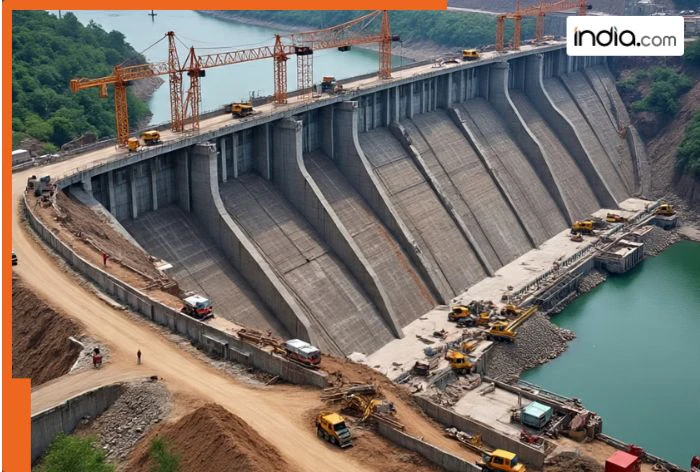Siang Dam: A tractor slowly climbed a muddy hill in Beging village of Siang district in Arunachal Pradesh on May 21. According to the reports, the vehicle was carrying a drilling machine and other equipment meant for a special study.
This study was being conducted to explore the possibility of constructing a large dam on the Siang River. The Siang River is known as the Brahmaputra in Assam and the Yarlung Tsangpo in China.
The local Adi community there is against the dam and has been protesting. Authorities, meanwhile, tried to carry out the work discreetly. They planned to begin operations in Beging village first and then transport the equipment across the river.
Locals are protesting against the dam:
According to an ET report, protestors marched to Beging, cut off its only link to the outside world a hanging bridge and damaged the drilling machines, halting the survey work.
Law enforcement agencies, despite the growing protests, remained restrained and avoided confrontation in the sensitive border region. Fearing a worsening of the situation, authorities temporarily suspended the operations.
Here are some of the key details:
- The NHPC engineers stationed at the current drilling site moved to Pasighat, the main town located on the banks of the Siang River
- This has brought a temporary calm to the disputed riverfront.
- The government remains committed to constructing the Siang Upper Multipurpose Project (SUMP), which is estimated to cost 1.5 lakh crore.
- The project includes a 267-meter-high dam with a storage capacity of 9.2 billion cubic meters (BCM), designed as a strategic reservoir to counter potential upstream water diversion by China.
Dam Vs Dam:
It is important to note that this 1,000-megawatt project offers Arunachal Pradesh 12 percent free electricity and revenue sharing. The timing coincides with Beijing laying the foundation of the world’s largest dam on the Brahmaputra River. The building of the dam marks the beginning of strategic water management in the Eastern Himalayas. This raises a critical question: Will India’s defensive dam strategy provide effective deterrence in this sensitive region, or will it further exacerbate environmental vulnerabilities?
Arunachal Pradesh Chief Minister Pema Khandu said on July 9, “This (Chinese dam) poses an existential threat to our tribes and our livelihood. It is quite serious because China could even use it as a kind of ‘water bomb’.” He made this statement just a few days before Beijing officially announced the commencement of the construction work.
